
Teaching and learning resources for the construction industry with NVQ and Diploma Assessment Criteria
Before constructing any buildings we need to excavate or dig out Subsoil enabling us to carry out the following work
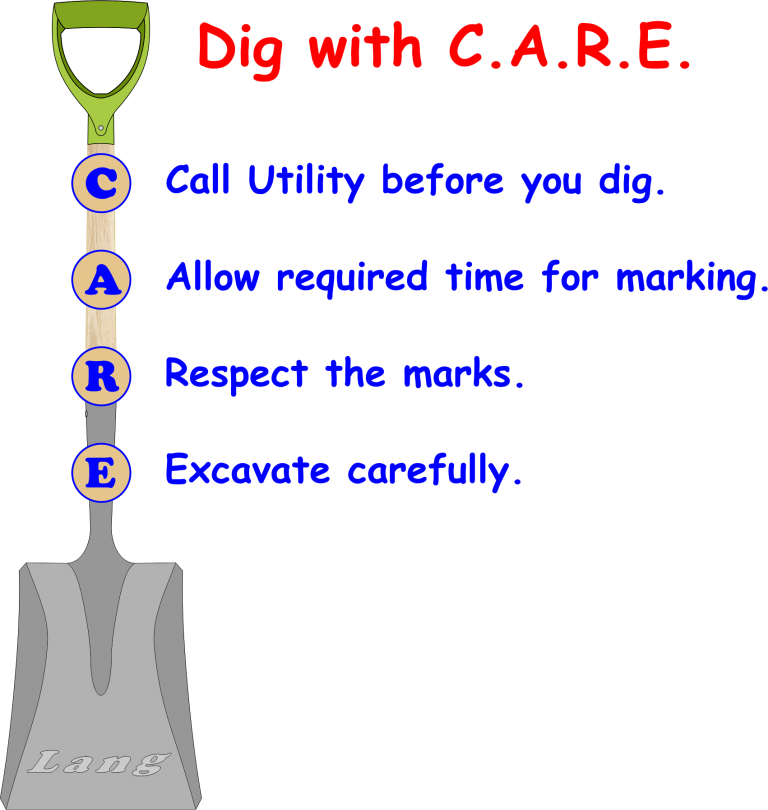
Dig with C.A.R.E
Contractors must prepare safe systems of work for their employees by identifying the hazards they are likely to encounter during the work and making a suitable and sufficient assessment of the risks posed by those hazards.
Here’s a short breakdown of activities in detecting underground services:
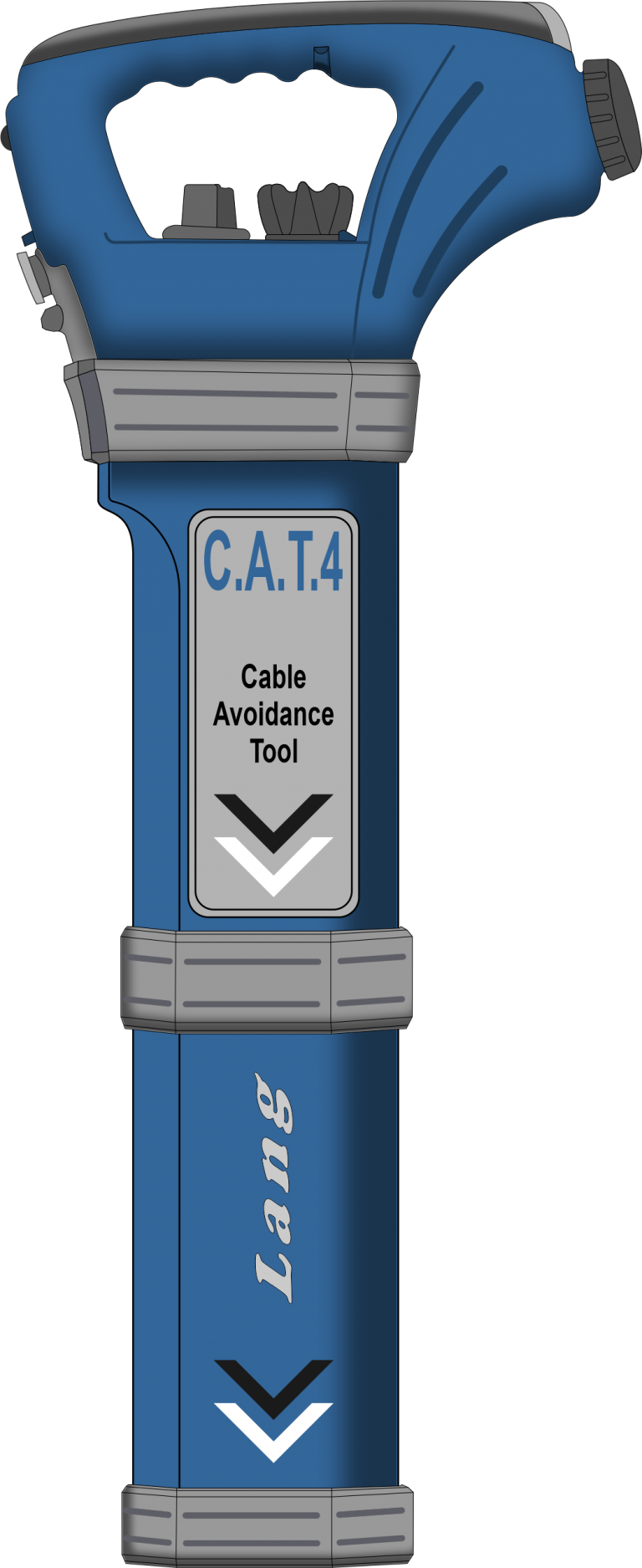
Cat Scan
1. Visual Checks
2. Check Plans
3. Cable Location Tool
4. Marking Ground
5. Assume Live
6. Trial Holes
7. Safe Digging
8. Tool Choice
9. Provide Support
For additional information on this topic go to the following link below:
A wide variety of materials and colours have been used for services over the years, making identification difficult.
If underground services have been uncovered on your site, it is important to correctly identify the type of service so you can deal with it safely.
Failing to work safely around underground services can be deadly.
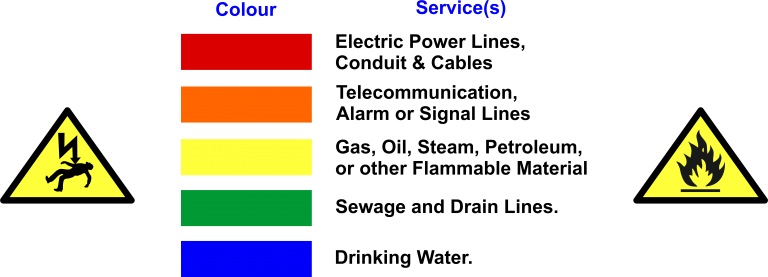
UK's Colour Codes for Underground Utilities
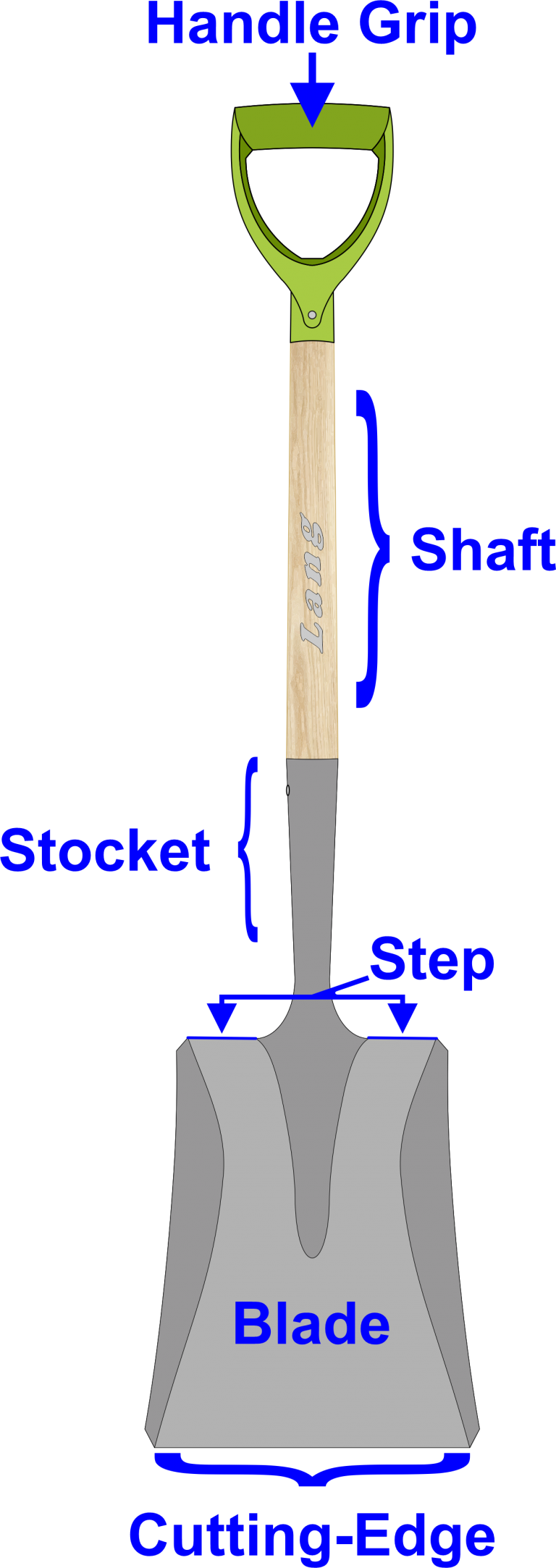
Shovel Parts
Grip
The grip of a shovel is the uppermost part, which is attached to the shaft. It can take the form of a wooden, plastic, or metal handle, but often there may be no handle at all, and you can use the shovel by holding onto the top part of the shaft.
Shaft
The shaft of a shovel is the long ‘pole’ like part of these tools, and it is used as leverage when operating your shovel. They are usually made from wood, fiberglass, or metal.
Stocket
The stocket of a shovel is where the blade meets the shaft. It’s important that the collar is secure and sturdy; otherwise, it may crumble or snap during heavy work.
Step
The step of a shovel is also known as a kickplate. It is the uppermost edge of a blade where you can place your foot to add pressure, though not all shovels will have a step.
Step are usually found on digging shovels where the extra weight of the user can be utilized to dig deeper into the ground.
Using a step will achieve better results, and also makes the job much easier for the user, as they can use their weight to help dig rather than just arm and back muscles.
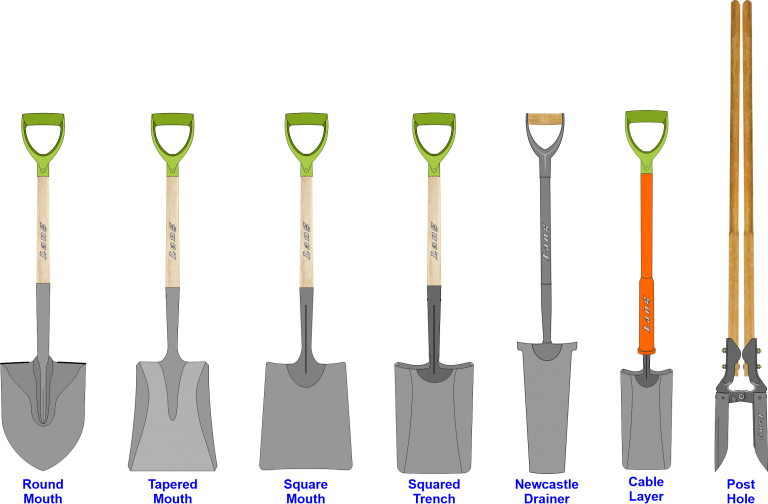
Selection Shovel
Blade
The blade of a shovel is the lowermost part of the tool, which makes contact with the ground.
It is usually made of metal or aluminum and the blades come in a wide range of shapes and sizes.
Cutting edge
The cutting edge also known as the tip of a shovel is the lower edge of the blade, furthest from the shaft.
It takes various shapes depending on the intended use of the shovel.
Flat tips are best for scooping or moving, while pointed and rounded tips work best for cutting and digging.

Round Mouth Shovel
Round Mouth Shovel makes digging subsoil easier due to the pointed Cutting-edge, especially in hard grounds.
Not ideal for preparing beds for slabs or moving large amounts of construction materials
Tapered Mouth Shovel is a multi-use shovel for removing subsoil and shovelling duties.
This multi-use shovel can be used for mixing concrete, backfilling, and various aggregates.

Tapered Mouth Shovel

Square Mouth Shovel
Square Mouth Shovel is generally used for edging trenches and small amounts plants, the blade being easier to cut through the roots and forming chances.
A Square Mouth Shovel hasn’t got a curve shape to the blade as the square trench shovel.
A Square Trench Shovel with its slightly curved shape and square cutting-edge helps to clean and square off trenches.
It can also be used to remove subsoil due to the square cutting-edge it is not as quick as a round pointed cutting edge.
This shovel is also used for moving materials like sand, aggregates into a wheelbarrow.
The square cutting-edge of the shovel can also be used to spread wet materials like concrete around before levelling off.

Squared Trench Shovel

Newcastle Drainer Shovel
Newcastle Drainer Shovel A slight variation on the ordinary drainer shovel.
The step of the shovel is wider on the top of the blade, this provides a greater area to apply pressure in the hard subsoil.
This also helps to prevent your feet from slipping off the step area of the shovel.
The Cable Laying Shovel as the name suggests our design for digging narrow and long trenches for laying pipes or cables.
The shaft can be made from wood but nowadays for Health & Safety is usually made out of fibreglass
The blade is long and tapers inwards at the end making it easier to go through hard and heavy earth.
Cable Laying Shovel removes subsoil less than a normal shovel and with a neater finish.

Cable Layer Shovel

Post Hole Shovel
A post hole shovel is a type of double shovel, which is also known as a post hole digger.
Pair of handles can be made from fibreglass or hardwood handles.
The double shovel usually with long and narrow inwardly curving blades that have curved tips this helps to slice through the ground and roots.
Post hole shovel extracts the soil by closing the double shovels together forming a cylinder of soil making it easier to remove the soil from the hole.
It creates a neater post hole at a fraction of the time than a normal shovel.